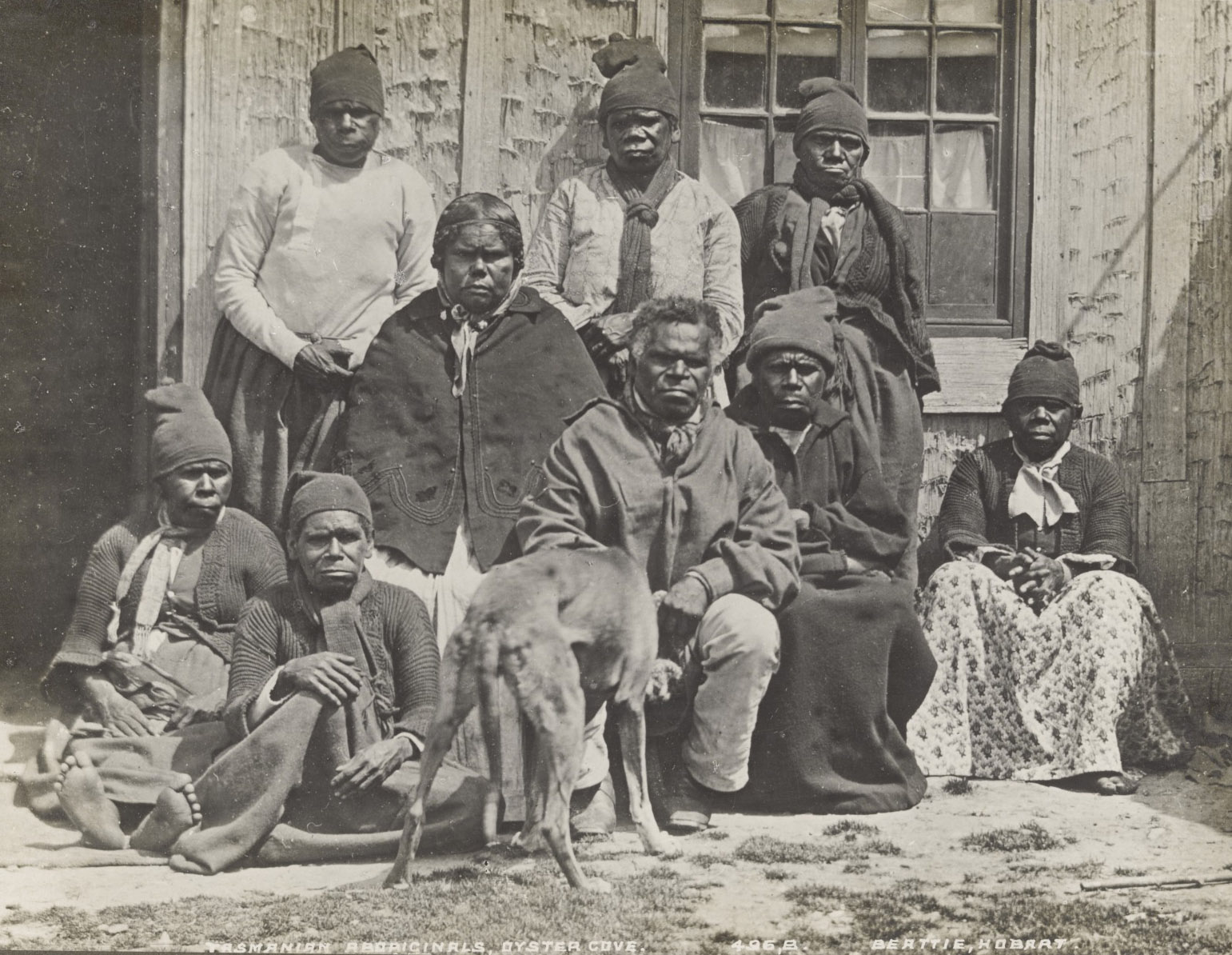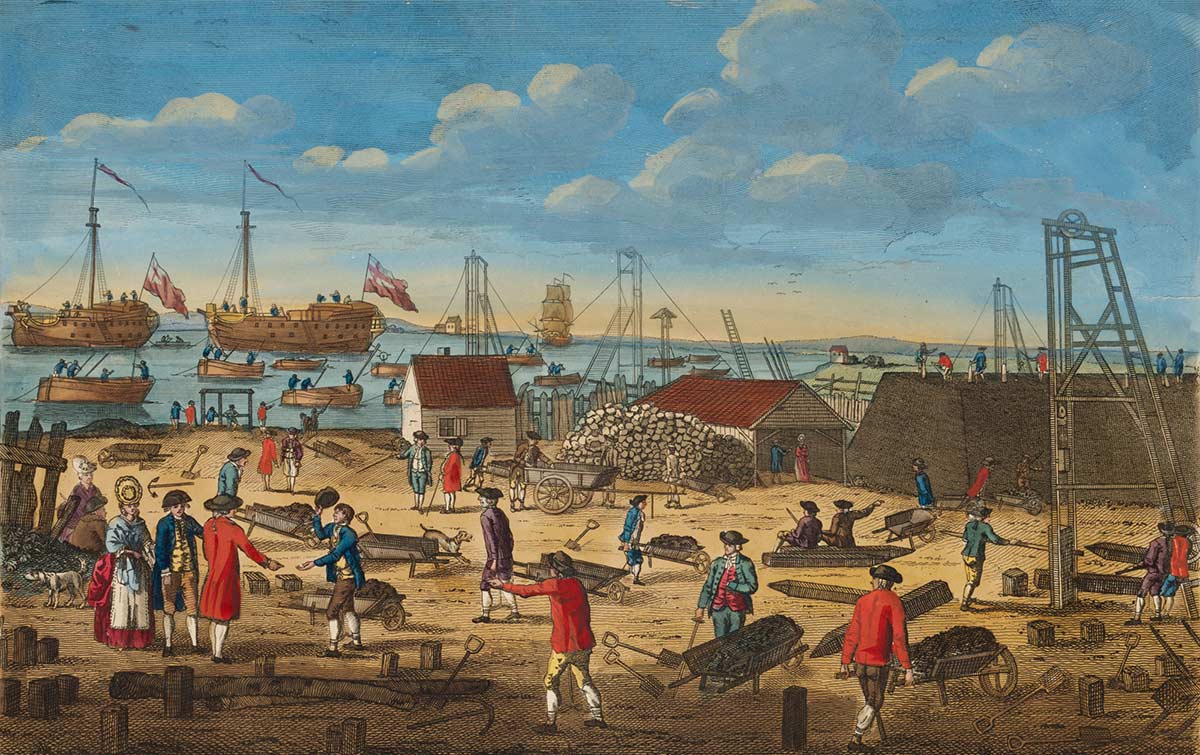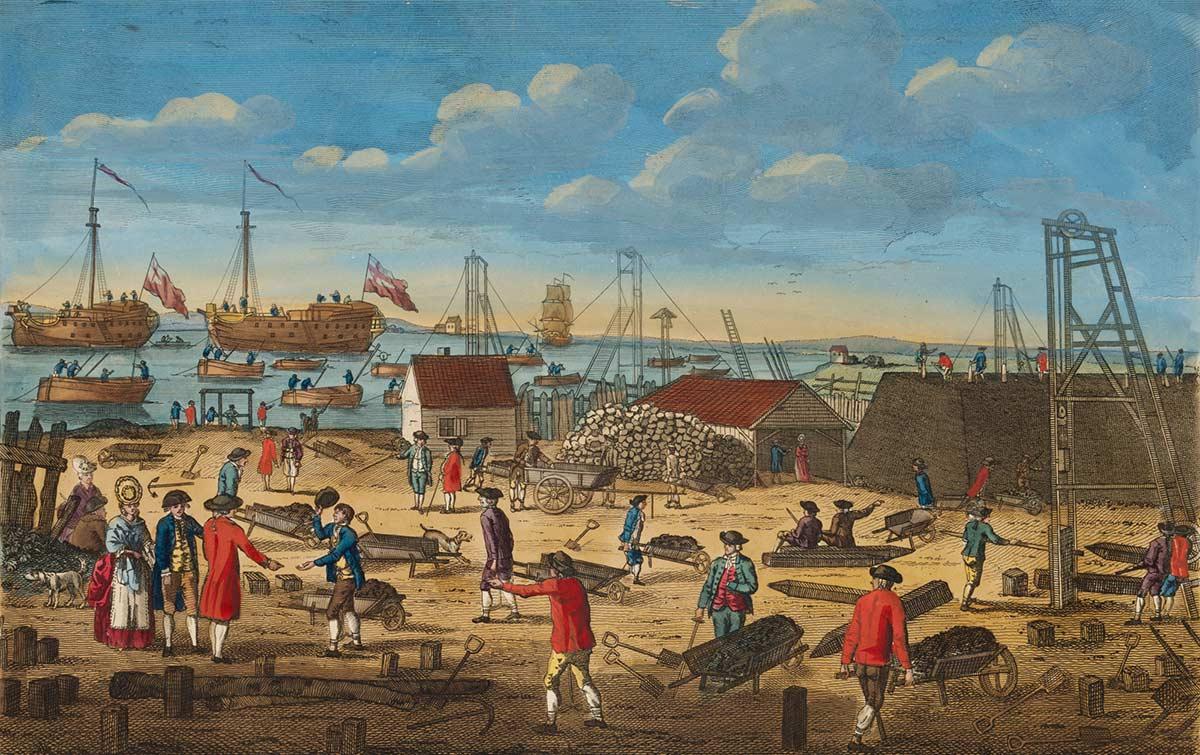Learning module:
The Spiritstone Saga
The Spiritstone Saga
12. Conflict in Tasmania
1830: The ‘Black Line’
| WARNING: This page contains some difficult and potentially distressing content |

You take a small passenger boat from Melbourne to Hobart, the biggest town in Van Diemen’s Land, a triangular-shaped island off the southern coast of Australia. From the dock you head inland, where you camp near a farm. The next day you get talking to local farmer Pat Stanway about the relations between settlers and Aboriginal people on the island.
‘Been rough from the start, mate,’ says Pat, ‘I hear the French met some Aboriginal people down here way back in 1772 and already they were fighting, spear against gun. The local churchman told me even Abel Tasman, you know, that explorer from the Netherlands in Europe, mapped some of this place as far back as 1642. I know whalers been down these parts since at least 1790. Rough fellows though, brought diseases that wiped out heaps of Aboriginal people. Even kidnapped some of them to work on their ships.’
He offers you a sip from his leather water bag. You take a big gulp, thirsty from the yellow sun high above.
‘Island got settled by us Europeans in 1803. The British were worried the French might do it first. So here we come, the English farmers. We’ve put sheep on the land now, but it’s not easy with raids from Aboriginal people. Still, reckon there’s 23,000 settlers now. It’s like a war between us, the “Black War”.’
The sound of a twig cracking makes Pat jump and turn around, startled.
‘Can’t never be too careful now. Most settlers are pretty riled up about all this. Lieutenant-Governor George Arthur hasn’t done enough to protect us and our farms I reckon. Sure, in 1826 he allowed us to raid their camps, and farmers I know just shoot Aboriginal people if they see them, even women and kids. Dunno if that’s right.’
You look at Pat very concerned, finding it hard to understand his point of view.
‘So now Arthur’s calling for this “Black Line”, see. Making a huge human chain across the settled district. Gonna try and rid this area of the Aboriginal people so we can farm in peace. As the Lieutenant-Governor says, it’s “for the purpose of capturing those hostile tribes of the Aboriginal people.”’
‘Surely that won’t work?’ you ask.
‘It’s gonna be the biggest force ever assembled against Aboriginal people. One in ten settlers on the island will take part, at least that’s the idea. Sounds expensive.’
You bid Pat farewell, unsure about his morals.
You advance into the wilderness, seeking out Aboriginal Australians. At last you spot a camp. You strike up a friendship with an Aboriginal elder, who explains the deep history of the land.
‘Our people have lived here since the Dreaming. Reckon there was about 15,000 of us, in nine nations, before the white invaders arrived. Only about 2000 of us now. Sad but true.’
You stay with the Aboriginal people for the next few days. Then at dawn one morning it begins. There are shouts and gunfire in the distance. Your Aboriginal friends have their hiding places well planned, however, and the line of settlers passes them right by.
You bid farewell to the Aboriginal people and head back to Hobart Town. Months later, you see a newspaper article stuck to a public wall in Hobart: ‘Black Line — failure or success?’ is the headline.
The article mentions that the ‘Black Line’ itself didn’t work. Aboriginal people easily hid from the settlers as they knew the land much better. Two Aboriginal people were captured and another two lost their lives. But eventually the violence against the Aboriginal people did succeed in moving them off their lands.
The Spiritstone’s orange glow tells you it has some information from the future for you.
‘At the time, the settlers won and the Aboriginal people had no home on the island. But in modern Tasmania, there is again a thriving population of at least 25,000 Aboriginal people.’
Your task
- Imagine you are the mother of an Aboriginal child in Tasmania in 1830, awaiting the march of people coming towards you as part of the ‘Black Line’.
- Write a short role-play of a conversation they might have. Some of the conversation has been added for you:
Mother: Are you scared, little one?
Child:
Mother: Don’t be afraid, I will protect you…
Child:
Child: Mother, why are they doing this?
Mother:
Child: Where is father?
Mother:
The stone shines a green colour.
‘You must hear about the many new people coming to country, young one.’ Go to 14.







